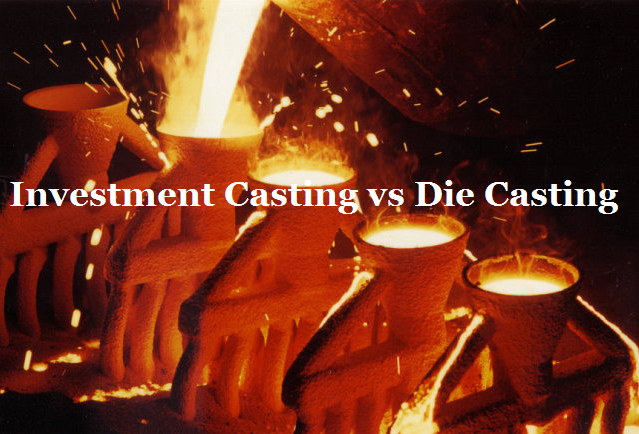Difference Between Die Casting and Investment Casting | What is Investment Casting | Diecasting-mould
Investment casting is an ancient process that has a long development history, die casting services are commonly used for current metal projects. They are both manufacturing methods using a mold, which process to choose when investment casting vs die casting? In this article, we’ll talk about what is investment casting and die casting, along with their working cycle and materials, as well as the difference between investment casting and die casting.

What is Die Casting?
Die casting is a manufacturing process used to produce metal casting parts with the same geometries as a reusable metal mold through forcing the molten metal to the mold cavity and waiting for until cool and harden.
How does die casting work? The die casting process is characterized as applying high pressure to inject the molten metal material like aluminum or zinc alloy into a die cavity, the die or mold is usually machined with hardened tool steel in the shape of desired products, a release agent will be applied to the mold and then fill the sleeve with molten metal and use the piston to push the sleeve into the die cavities. Keep putting pressure to the metal until the die cavity is full. Once the metal casting cools and solidifies, eject it from the tool.
What materials are used in die casting? Most die casting processes are iron-free, zinc, aluminum, copper, magnesium, lead, tin and more non-ferrous alloys can be used to produce casting parts.
What is Investment Casting?
Investment casting, also is referred to as lost-wax casting, is a manufacturing process pouring molten metal into an expendable ceramic mold, which is formed by using a wax pattern (a disposable part in the desired shape).
How does investment casting work? The first thing is to create a wax pattern in the shape of the desired part, then attach the wax pattern to a sprue, dip it into liquid ceramic slurry repeatedly until the ceramic material hardens around the wax pattern, the internal geometry of the ceramic mold is the shape of the required casting part. Then heat the ceramic mold to make the wax melt and clear it to leave a cavity. The molten metal can be poured into the mold cavity and once it’s cool and solidified, the ceramic mold will be shattered and leaving the investment casting part.
What materials are used in investment casting? Investment casting can cast a wide range of metals and alloys including stainless steel, zinc, aluminum, and more. It’s capable of casting ferrous metals along with non-ferrous metals.
Difference Between Die Casting and Investment Casting - Investment Casting vs Die Casting
Die casting and investment casting can both cast metal casting parts with complex shapes using various materials. What’s the main difference between them?
1. Mold
Die casting is a metal casting process generally employing steel mold or die, while investment casting uses ceramic molds to create the parts. The process of fabricating the mold is also different.
2. Surface finish
Investment casting gives a great surface finish to the product directly, while die casting parts usually requires secondary processing to achieve a good surface finish.
3. Materials
Investment casting can work with ferrous and non-ferrous metals, while die casting only cast non-ferrous alloys.
4. How the material is filled
Die casting inject molten metal at high speeds and pressure, while gravity pouring used in the investment casting process.
5. Cost
Many steps of the investment casting procedure still need to be executed manually, it has high labor cost, the labor cost of the die casting process is relatively low. The cost of per unit investment casting parts is also higher.
6. Application
Investment casting is suitable for low volume projects, while die casting is more cost-effective for large-batch production.
7. Tolerance
Die casting process is capable to hold tighter tolerance than investment casting based on the same materials.
8. Cycle time
Die casting is more automatically and its cycle time is much shorter, especially the multi-slide die casting.

